Coleria: description of species, planting rules and methods of reproduction
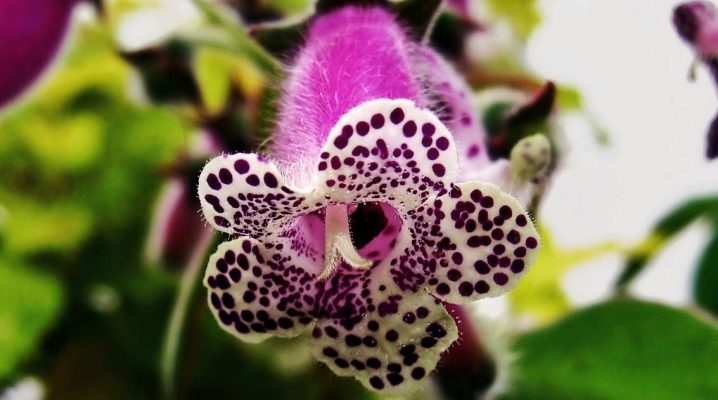
Koleria is a long-term representative of the Gesneriev family. She belongs to decorative flowering plants and is quite undeservedly deprived of the attention of flower growers. The native places of koleria are the tropics of Central America, therefore it is also called the "Colombian beauty".
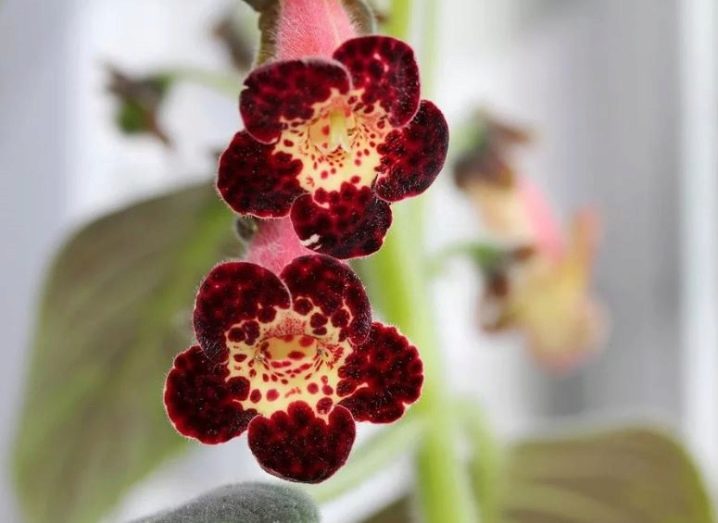
Description
As a houseplant, coleria is a not too tall herbaceous bush with inclined velvety stems and leaves. The roots of the plant are tuberous and scaly. Young shoots are straight, and sink with age. Oblong large leaves are located opposite, their color is varied and depends on the species. The edges of the leaf plates are crenate, the surface is soft, covered with villi.
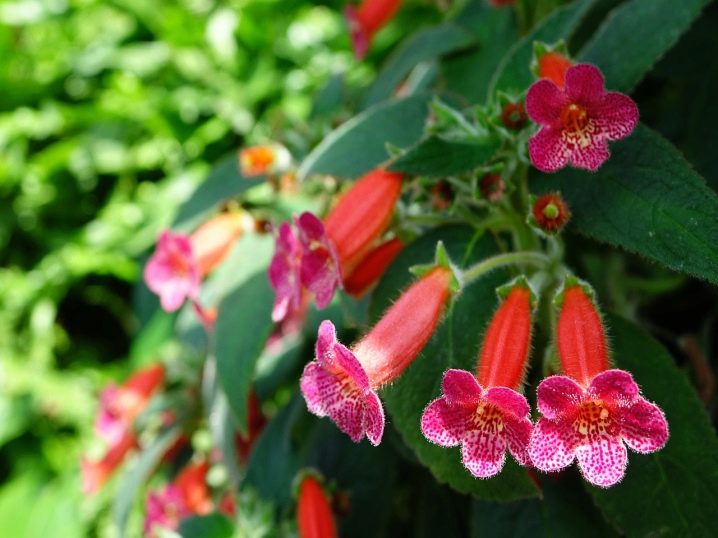
The main feature of the koleria is its unusual bell-shaped flowers with an elongated corolla. The color of the petals varies from delicate pink to deep brown, replete with numerous specks of different shades. Flowers are formed singly or 2-3 in the axil of the peduncle. The flowering period is long and exuberant - from spring to late autumn (with a short pause). Growing a plant at home is not too difficult, since the flower feels good in the conditions inherent in a city apartment.
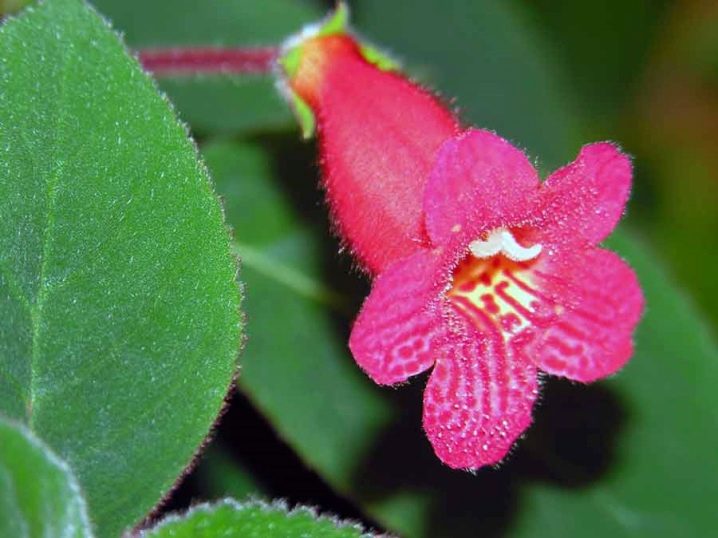
Types and popular varieties
Coleria has a large number of varieties, including hybrid ones, bred by breeding.
Bogotskaya - with leaf plates of different shades of green, characterized by jagged edges. Inflorescences are variegated: with a reddish-yellow outer part and a yellowish center with scarlet dots. It blooms for a long time - almost the whole summer.

- Majestic has erect stems, which are covered with reddish hair. The leaves are shiny, with a light white fluff. The flowers are rather large, deep orange in color, speckled with bright red dots and stripes of dark red tones, going deep into the middle of the throat.
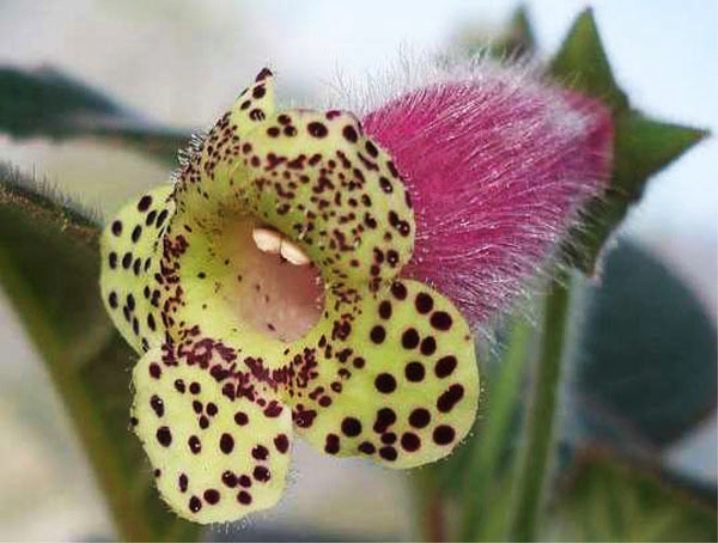
- Spikelet belongs to the undersized Mexican varieties of coleria. Plates of the plant - with silvery soft villi, elongated in shape. The flowers are orange-red on the outside and yellow with scarlet blotches on the inside. They are formed on a high peduncle alternately, like grains on a wheat spikelet, which is why the species has such a name.
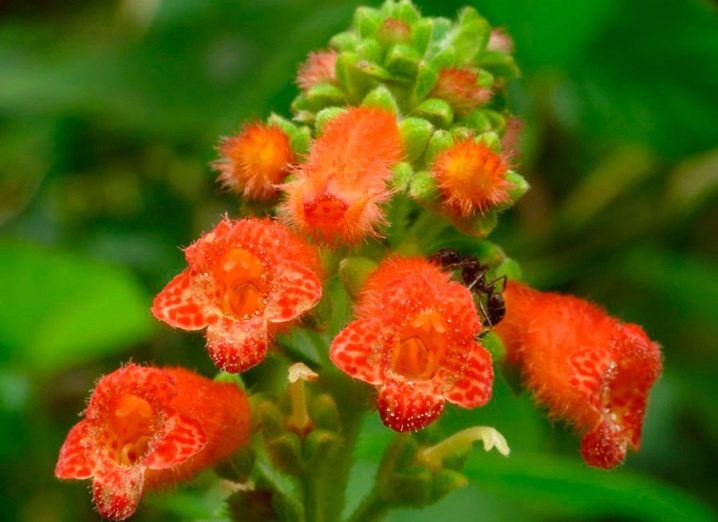
- Coleria Lindena comes from the mountainous regions of Ecuador. Squat bush, not exceeding 30 cm, with erect unbranched shoots. The stems are covered with white hair. The leaf plates are slightly elongated, with a pale pink underside and a green upper surface. The outer side is covered with light stripes parallel to the leaf veins. The flowers are small, white-purple on top and yellow with brown specks inside.

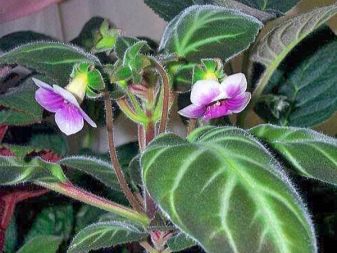
- Foxglove belongs to large species, the height of the flower can reach 80 cm. It has straight stems, which tend to bend over time. It has a greenish color of opposite leaves. Bell flowers with 5 petals, the outer part of which is white with purple stripes, and the inner part is light green with purple dots. The whole plant is covered with a whitish, delicate nap.
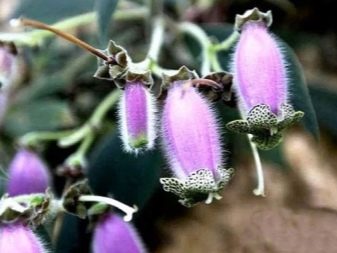
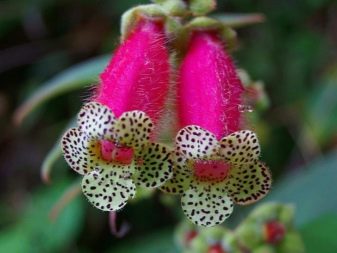
- Pleasant comes from Colombia, where this species has chosen the highlands. Stems of weak green color, overgrown with sparse whitish hairs. The leaf plates are oval, green with brownish veins and silver stripes.On the outside, the flower is scarlet, and in the middle, the tube is white with numerous purple dots.

- Fluffy, or Eriantha, characterized by leaves of a deep green color with burgundy edging and covered with velvet pile. The flowers are orange or scarlet, the middle is yellow, dotted with pink blotches. This species is the most common among indoor varieties of coleria.
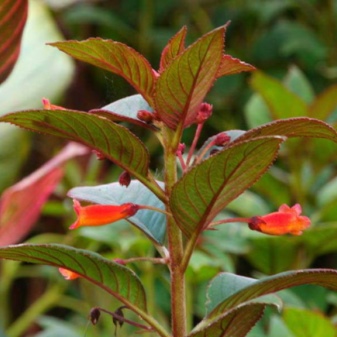
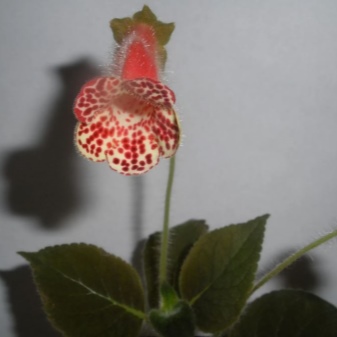
- Tube-flowered originally from Costa Rica as well as Colombia. The shoots of the plant are single, straight, with oval green leaves with an elongated, sharp top. The lower part of the leaf plates is reddish. The flowers are tubular, without an expanded tip, like in other species, with a rich orange color.
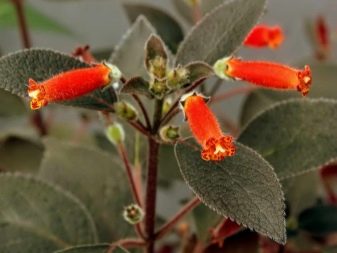
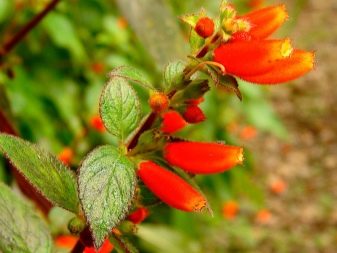
- Woolen endowed with a thick shoot, covered with large green plates, pubescent with light brownish villi. The plant blooms with delicate beige bells, which have brown veins on the petals, with a white center covered with rare stripes of beige tone. All parts of the koleria are covered with thick soft pile, which is why the look got its name.
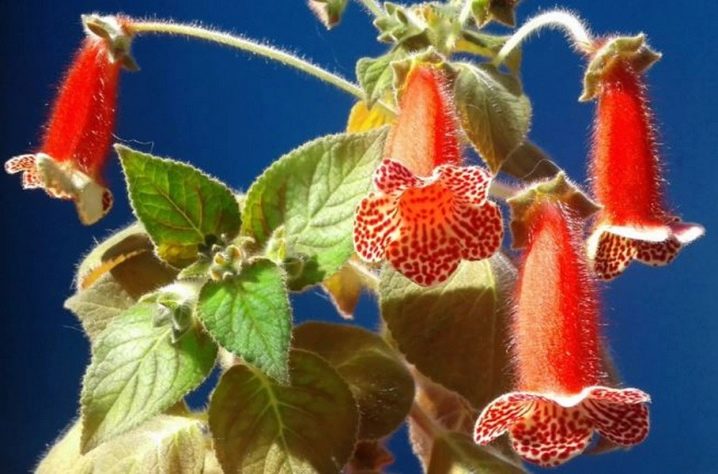
Coleria is distinguished by a variety of bred varieties with the most diverse colors of leaf plates, especially buds.
- Ampallang - with tubular white-yellow flowers, densely covered with purple dots. Leaves in green tone have darker veins.
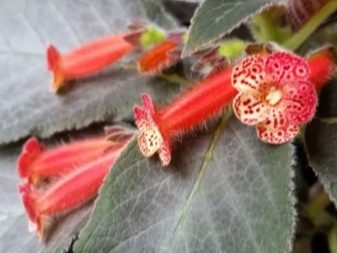
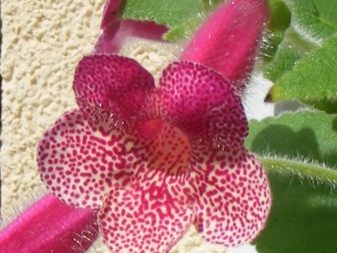
- Qween Viktoria - with flowers in the form of a tube. The outer side is pale pink, and the inner side is white with maroon lines and pinkish edging.
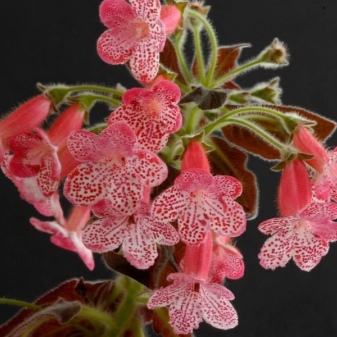
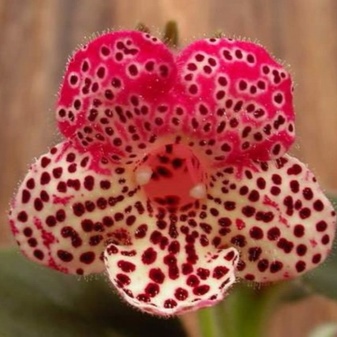
- Sunshine - differs in medium-sized bright pink flowers with a yellow-green throat, replete with a scattering of purple stripes and specks.
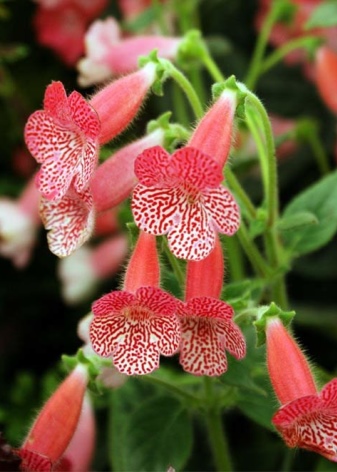
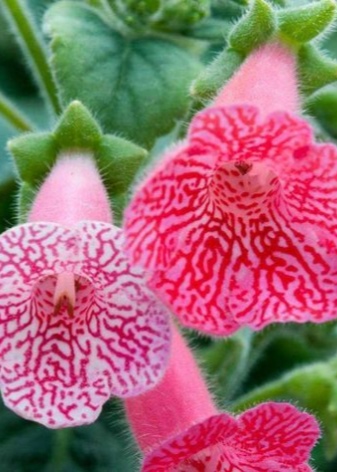
- Bibbi - a plant with large pinkish-red flowers with slightly whitish petals. They are covered with cherry-colored dots, the throat is bright, yellow in color. The leaf plates are strongly inclined and have a slight green tint.
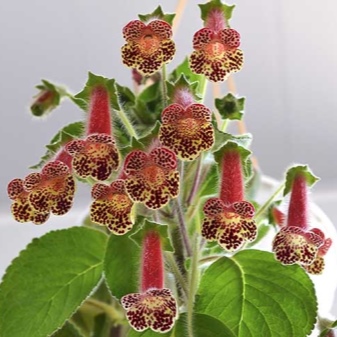

- Flashdance - blooms with impressive coral-colored buds, petals and a tube of yellowish-white color with pink dashes.
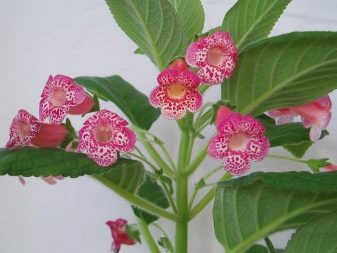
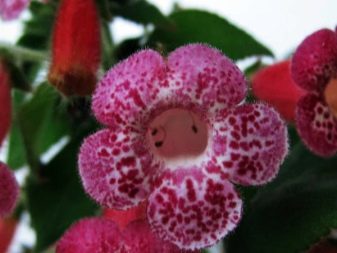
- Brimstone - characterized by an unusual cherry-yellow color and a white tube. There are numerous blotches of mauve. Leaves are elongated, densely pubescent.
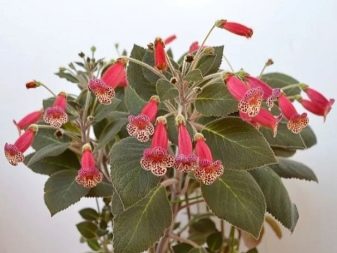
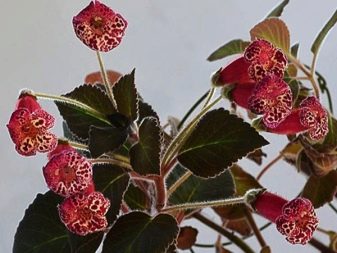
- Jester - with large inflorescences of a pale purple hue and a snow-white tube. The whole flower is abundantly strewn with pinkish blotches. Leaves are dark green in color with beautiful bronze tints.
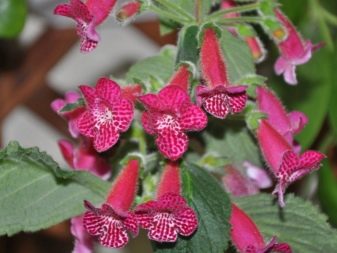

- Clytie Is a plant with large red-pink flowers with dull white petals and a yellow throat. The decoration is cherry-colored stains. Light green leaf plates with patterns.

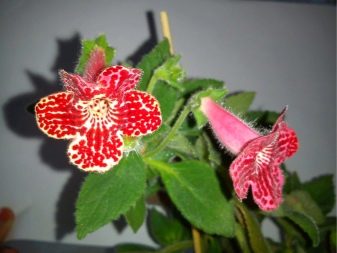
- Koleria Varshevich - has large variegated flowers of a delicate pink shade with a tube and light green petals. Blotches are purple.
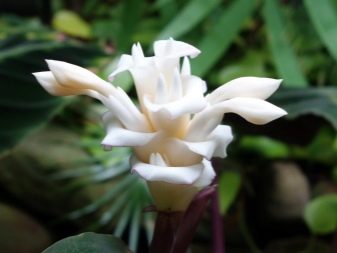
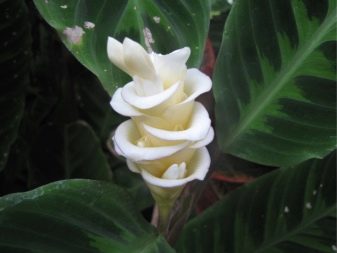
- "Uneven" - belongs to mini varieties. The flowers are elongated, of a dull burgundy color, with a pharynx, which is covered with purple lines.
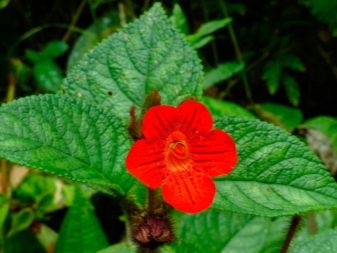

- Manchu - the leaves are light green, and the flowers are orange, which have specks on the bend of a burgundy color.
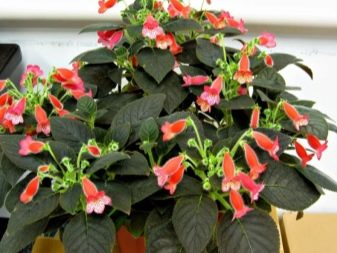
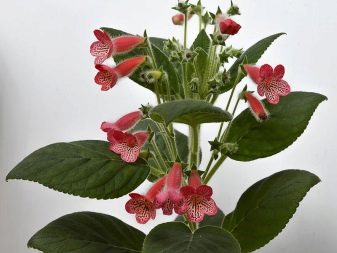
- Sunny - has large yellow flowers, interspersed with red, foliage - a discreet green hue.
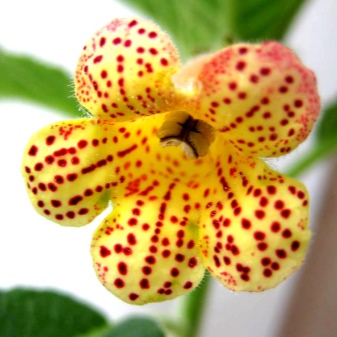
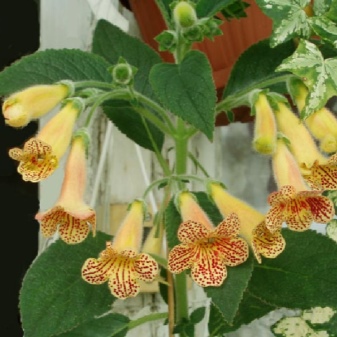
- Karl Lindbergh - the owner of the darkest color of the buds of all the colors. The tube is deep lavender and the neck is white. The edges of the petals are dotted with dark crimson dots, closer to the base they become denser and turn into horizontal stripes.
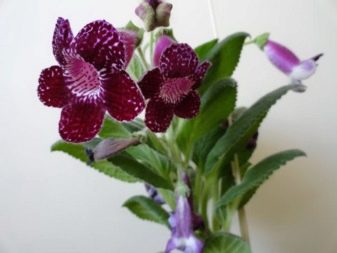
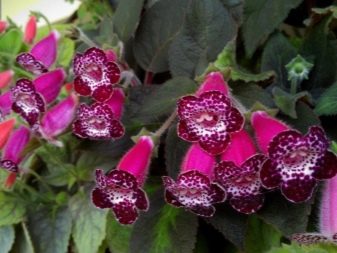
- Red ryder - has drooping leaves of a dark green color, and the bells are deep red. All petals in dense dark cherry dots.


- Roundelay - variety with pinkish-orange flowers. Inside they are white, the petals at the bend are the same, only with pink small spots.
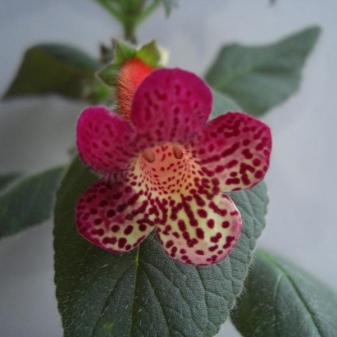
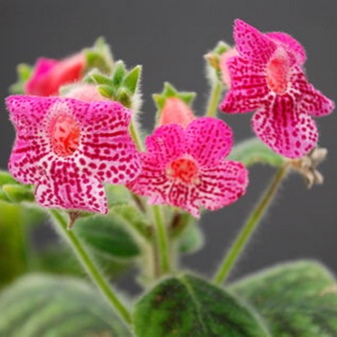
- "Persian rug" - characterized by green leaf blades with red edging along the jagged edge.The flowers are velvety, large, with interesting colors: the top is reddish-crimson, the inner side is yellow. The same color and the lapel of the petals, but still strewn with large dots of cherry color and has a raspberry border. The flowering of this variety is abundant, and the formed bush is of a neat circular shape.
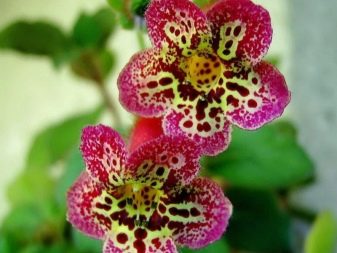

- Rongo - a plant with light olive leaves covered with lighter veins. Flowers of violet color with a neck in burgundy speck.
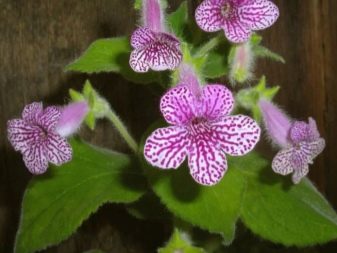
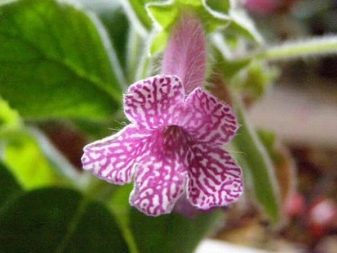
- Mother's lipstick - a variety with very spectacular flowers: intense pink and maroon blend harmoniously with snow-white blotches, creating the illusion of radiance.

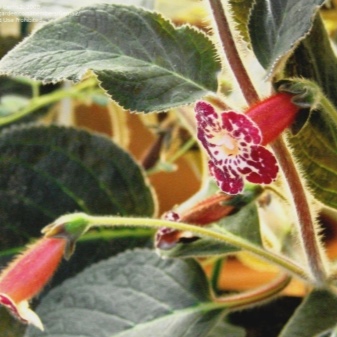
- Sciadotydaea hybrid - a hybrid variety with large pinkish-scarlet buds covered with soft villi. A beautiful dotted pattern on the outside of the flower is gracefully set off by the dark green tone of the foliage.
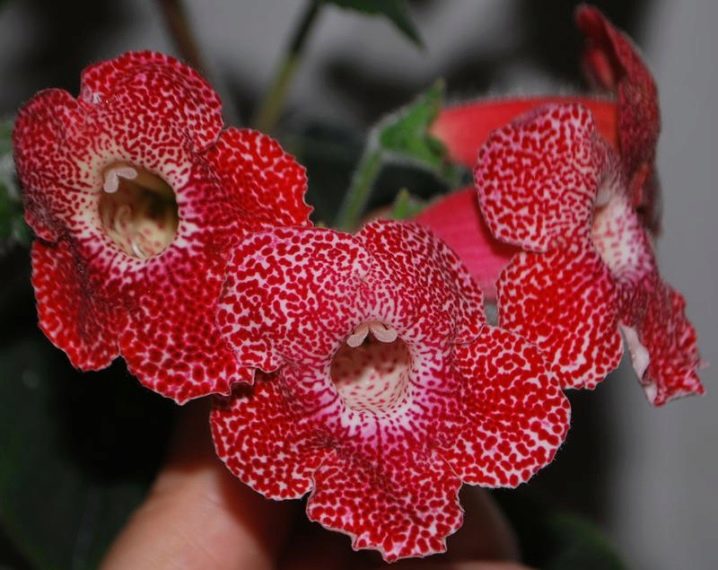
- Cinnamon toast - koleriya, which has a velvety coating on the leaves and flowers. Belongs to tall crops, so it needs support. Flowers are multiple, coral red.
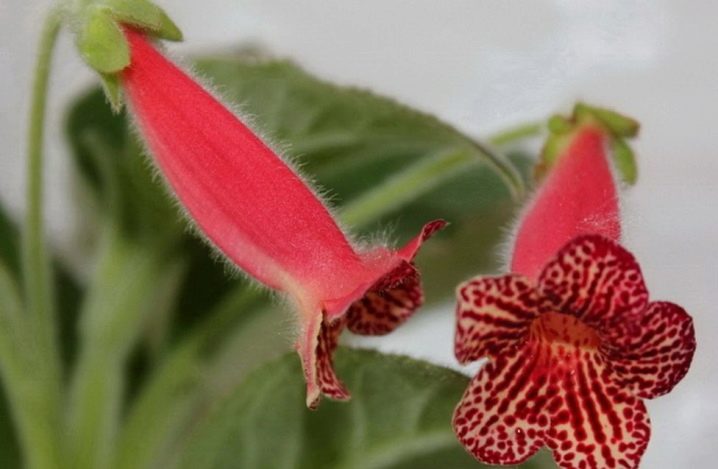
- "Carnival" - belongs to domestic varieties. Blooms profusely and for a long time with an orange-red palette.

- Emily roberts - the owner of orange buds with a yellow center. The petals are crimson, with purple splashes.
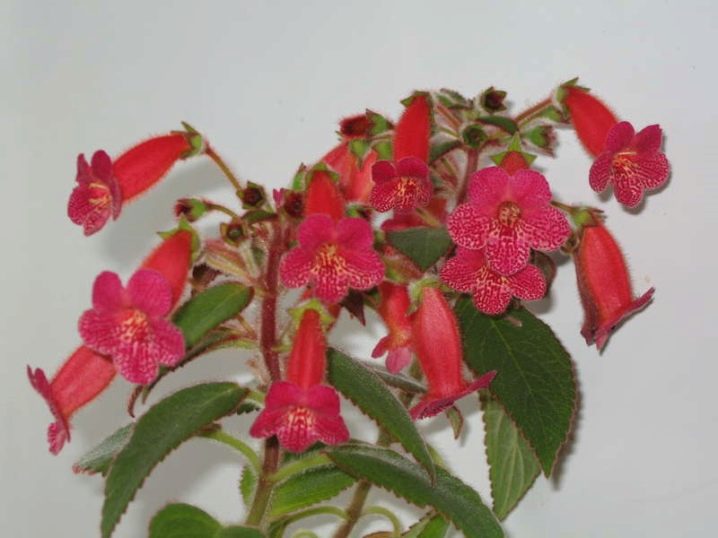
- Peridot's kitlope - features a fluffy, bright orange tube. On the bend, the petals are pinkish-white, with burgundy specks.
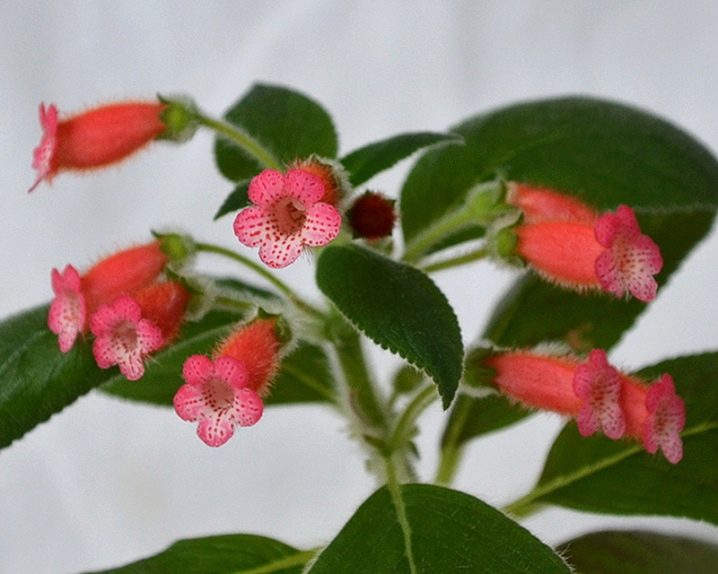
Such varieties of colerias as: Marta, Peridot's Rolo, Beltane, Birka, Thad's Uncle Ron, "Lono" amaze with their unusual colors.
Landing
For planting koleria, a ready-made substrate for gloxinia or saintpaulia is well suited. But the best option would be cooked independently from 2 parts of black soil or leafy soil, 1 part of peat, 1 part of sand and 0.5 part of humus. Be sure to have a two-centimeter drainage layer at the bottom of the pot. So the moisture will go into the pan and the roots will be able to breathe. The planting container is shallow, since most of the roots are near the soil surface.

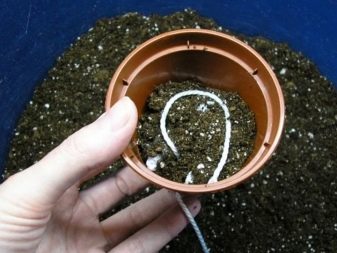
Colera is transplanted often, every year, since it is characterized by a rather rapid growth. The procedure is carried out mainly in March or early April. In order to injure the plant as little as possible, it is better to transplant by the transshipment method, when the flower, along with the earthen lump, is rearranged into a new pot and fresh soil is added. If the roots are damaged, the diseased parts are removed, and the sections are treated with crushed coal and the plant is placed in completely new soil.
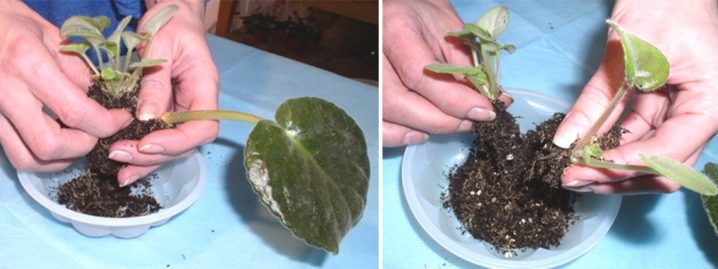
Care
The content of the coleria is not so troublesome, flower growers consider it undemanding and easy to care for, but do not forget that the flower comes from humid tropical forests. In order to somehow create natural conditions for the plant, you need to comply with the basic criteria.
- The plant needs regular watering, especially from spring to autumn. Moisturizing should be frequent, about twice a week, and intense. In the summer heat, you can slightly increase the amount, and in cool periods, on the contrary, reduce it. Water is used filtered or settled for several days. It is better to use alternately upper and lower watering, that is, moistening the soil in the usual way and pouring water into the pan. Do not allow liquid to get on parts of the plant: rotting may begin.
- Despite the fact that the flower prefers humid air, it tolerates the natural conditions of the apartment well. Spraying is not applied: due to the villi, droplets of liquid are retained and can provoke putrefactive processes. If it is necessary to humidify the space, you can place an aquarium or dishes with water next to it, and wet pebbles are also laid out in the tray.
- Coleria is a thermophilic plant. She feels fine at + 22-25 degrees during warm periods.
- Lighting must be provided bright, but exclude direct sunlight. Western or eastern window sills are optimal for placement; in the northern ones, the plant can die without additional lighting.In the midday heat, the flower should be shaded to avoid burns.
- Coleria is afraid of drafts, especially gusts of cold air. This should be taken into account when choosing the location of the plant.
- With the help of pruning, the flower is shaped and also maintained. If this is not done, the stems will be too elongated, bent, which will affect the number of emerging peduncles. When pruning a plant, first of all, dried and damaged shoots are removed, the knife must be disinfected. To create a lush bush and form a crown, the elongated shoots are cut by about a third. Cutting off the tops, they activate the activity of the axillary ovaries, thus new stems begin to form. The flower becomes more branched and voluminous. The tops can be used to propagate coleria.
- The plant loves the soil rather loose, with low acidity. To prevent root rot, a little charcoal can be added to the substrate.
- Fertilizers for coleria are used complex - for flowering plants or orchids. The recommended dose is halved. Top dressing is applied from April to September. There is no need to fertilize the plant during dormant periods.

The flowering period of the main part of the coleria varieties begins in July and ends in November. This is followed by a period of rest, when the processes of formation and growth are delayed, buds do not appear, although there are some species that bloom for almost a whole year. For abundant and long-term flowering, the plant needs to equip a place with good light, organize regular feeding and nutrient soil. It must be remembered: young koleriya rarely produces flower stalks, and starting from two years of life, the plant is already capable of blooming in full abundance.

During the dormant period, mainly in winter, koleria must create certain conditions:
- cut off all dried shoots and leaves;
- rearrange the flower in a cool but bright place with a temperature within +15 degrees;
- significantly reduce the amount of watering.


Reproduction methods
There are three ways to breed color at home: by seeds, cuttings and dividing the roots. Seed material, well dried, is sown in a mixture of leafy earth and sand, slightly irrigated with water and covered with foil or glass. The container is installed in a warm, well-lit place, remembering to moisten and ventilate. After growing, the seedlings are planted in the same soil, but 2 cm apart. It is better to replace regular watering with spraying from a spray bottle. After a month and a half, the seedlings dive again at a distance of 3 cm. The sprouts can be planted in a permanent place when they grow well and get stronger. Even before the formation of a bush in plants, the tops are pinched, thus stimulating the growth of lateral processes.

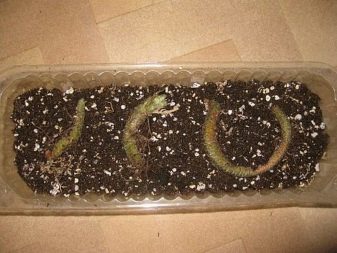
Cuttings are cut from the tops of the shoots and placed in small containers filled with leafy earth and sand, watered, covered with polyethylene. To speed up the rooting process, the petioles can be moistened with preparations that stimulate root formation. Be sure to open the film every day and water the sprouts regularly. After about two weeks, roots appear, and when the seedlings begin to grow, they can be planted in pots at their permanent growth site.
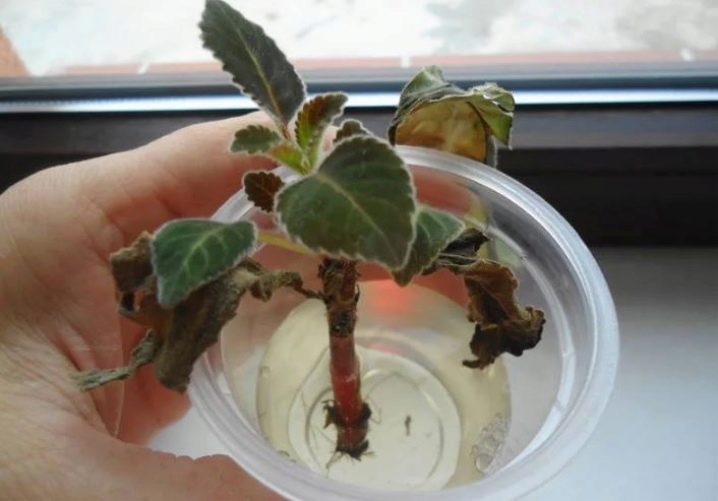
Coleria leaves are also used as petioles. Leaves are placed in a container with water or wet sand for rooting. But this process is quite lengthy and can last for several months.
The easiest way to propagate koleria at home is by dividing the root. In the spring, when the plant is transplanted, the rhizome is divided with a disinfected knife, all sections are sprinkled with crushed coal and allowed to dry out a little. In a container, parts of the roots are planted a few centimeters deep and well moistened. After some time, a sprout grows from the root element.

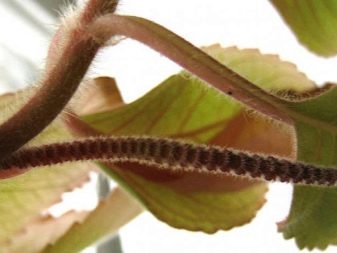
Diseases and pests
The plant rarely gets sick; from an excess of moisture, powdery mildew or root rot may appear. If gray or white spots appear on the leaf plates, the affected parts are removed, and the plant can be treated with fungicides. In case of root diseases, all diseased roots are also cut off, sprinkled with charcoal and irrigated with fungicidal preparations. The flower is transplanted into a new substrate, and the pot is disinfected. Due to improper care, some color problems may arise. To avoid them, you need to consider the following nuances:
- no flowering - too low lighting or a lack of fertilizers;
- dark spots on leaf plates indicate cold watering;
- yellow leaves and extremely elongated shoots arise from a lack of light;
- the leaves curl up from the dry air in the room;
- flabbiness of shoots and leaf plates can appear from root rot.
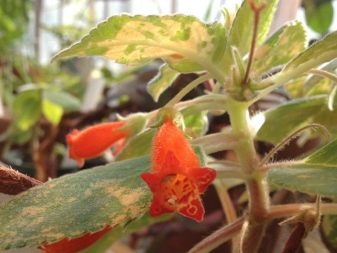
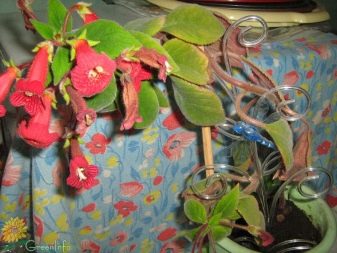
Of the pests, spider mites and aphids can sometimes damage koleriya. In such cases, the plant is washed with soapy water and treated with insecticides. The spectacular color scheme is so simple and not capricious to care for that even a beginner can cultivate it. And ensuring proper care will be the key to a long and abundant flowering of the "Colombian beauty".
For information on how to properly care for koleria, see the next video.























The comment was sent successfully.